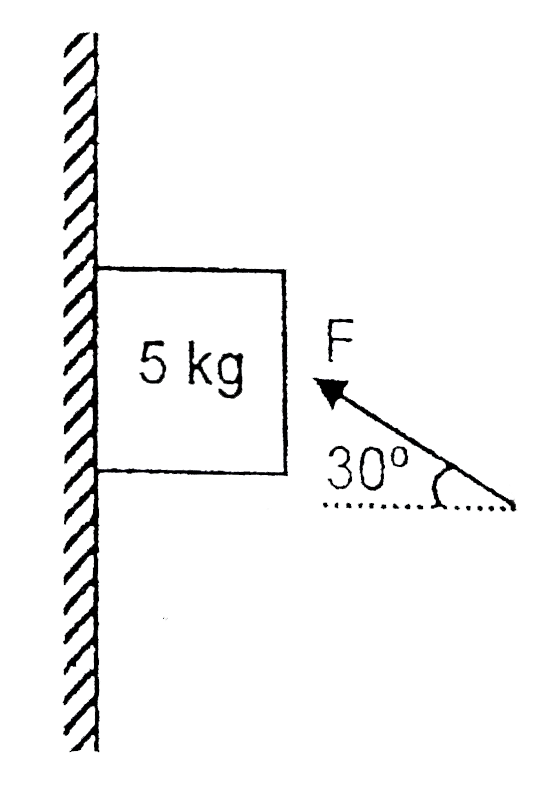The total mechanical energy of a spring mass system in simple harmonic motion is E=12mω2A2. Suppose the oscillating particle is replaced by another particle of double the mass while the amplitude A remains the same. The new mechanical energy will
√2E
2E
E/2
E
The correct Answer is:D
Step by step video solution for The total mechanical energy of a spring mass system in simple harmonic motion is E=1/2momega^2 A^2. Suppose the oscillating particle is replaced by another particle of double the mass while the amplitude A remains the same. The new mechanical energy will by Physics experts to help you in doubts & scoring excellent marks in Class 12 exams.
Updated on:21/07/2023Topper's Solved these Questions
- SIMPLE HARMONIC MOTION BOOK - RESONANCE ENGLISHCHAPTER - SIMPLE HARMONIC MOTION EXERCISE - Exercise- 2, PART - I
26 Videos
- SIMPLE HARMONIC MOTION BOOK - RESONANCE ENGLISHCHAPTER - SIMPLE HARMONIC MOTION EXERCISE - Exercise- 2, PART - II
1 Video
- SIMPLE HARMONIC MOTION BOOK - RESONANCE ENGLISHCHAPTER - SIMPLE HARMONIC MOTION EXERCISE - Exercise- 1, PART - I
25 Videos
- SEMICONDUCTORSBOOK - RESONANCE ENGLISHCHAPTER - SEMICONDUCTORSEXERCISE - Exercise 3
88 Videos
- TEST PAPERSBOOK - RESONANCE ENGLISHCHAPTER - TEST PAPERSEXERCISE - PART - II PHYSICS
105 Videos
Similar Questions
A block of mass m is resting on a piston as shown in figure which is moving vertically with a SHM of period 1s. The minimum amplitude of motion at which the block and piston separate is :

View SolutionTwo particles A and B are performing SHM along x and y-axis respectively with equal amplitude and frequency of 2cm and 1Hz respectively. Equilibrium positions of the particles A and B are at the coordinates [3cm,0] and (0,4cm) respectively. At t=0,B is at its equilibrium position and moving towards the origin, while A is nearest to the origin and moving away from the origin-
Equation of motion of particle B can be written as-
View SolutionThe equation of a particle executing SHM is x=(5m)sin[(πs−1)t+π6]. Write down the amplitude, initial phase constant, time period and maximum speed.
View SolutionWhen p−n junction diode is forward biased, then
View SolutionA force F is applied on a block of mass 5kg as shown in figure. Co-efficient of friction between the wall and clock is √32.(g=10m/s2)

Select correct option(s)
View SolutionA particle of mass 40 g executes a simple harmonic motion of amplitude 2.0 cm. If the time period is 0.20 s, find the total mechanical energy of the system.
View SolutionThe total mechanical energy of a spring mass system in simple harmonic motion is E=12mω2A2. Suppose the oscillating particle is replaced by another particle of double the mass while the amplitude A remains the same. The new mechanical energy will
View SolutionTwo simple harmonic motion y_(2) A sin omegat and y_(2)=A cos omegat are superimposed on a particle of mass m . The total mechanical energy of the particle is:
View SolutionTwo simple harmonic motions y_(1) = Asinomegat and y_(2) = Acos omega t are superimposed on a particle of mass m. The total mechanical energy of the particle is
View SolutionPassage I) In simple harmonic motion force acting on a particle is given as F=−4x, total mechanical energy of the particle is 10 J and amplitude of oscillations is 2m, At time t=0 acceleration of the particle is −16ms2. Mass of the particle is 0.5 kg.
At x=+1m, potential energy and kinetic energy of the particle are
View SolutionThe total mechanical energy of a particle of mass m executing SHM with the help of a spring is E=(1/2)mω2A2. If the particle is replaced by another particle of mass m/2 while the amplitude A remains same. New mechanical energy will be :
View SolutionShow that the total mechanical energy remains constant for a particle executing simple harmonic motion.
View SolutionA particle of mass 40 g executes a simple harmonic motion of amplitude 2.0 cm. If the time period is 0.20 s, find the total mechanical energy of the system.
View SolutionThe total mechanical energy of a spring mass system in simple harmonic motion is E=12mω2A2. Suppose the oscillating particle is replaced by another particle of double the mass while the amplitude A remains the same. The new mechanical energy will
View SolutionIn a simple harmonic motion, the force acting on a particle is given as F = -4x , total mechanical energy of the particle is 10J and amplitude of oscillation is 2m. At time t = 0 acceleration of the particle is -16m//s^2 . Mass of the particle is 0.5 kg. At x = +1m, potential energy and kinetic energy of the particle are
View SolutionThe total mechanical energy of a spring-mass system in simple harmonic motion is E=12mω2A2. Suppose the oscillating particle is replaced by another particle of double the mass while the amplitude A remains the same, the new mechanical energy will
View Solution

